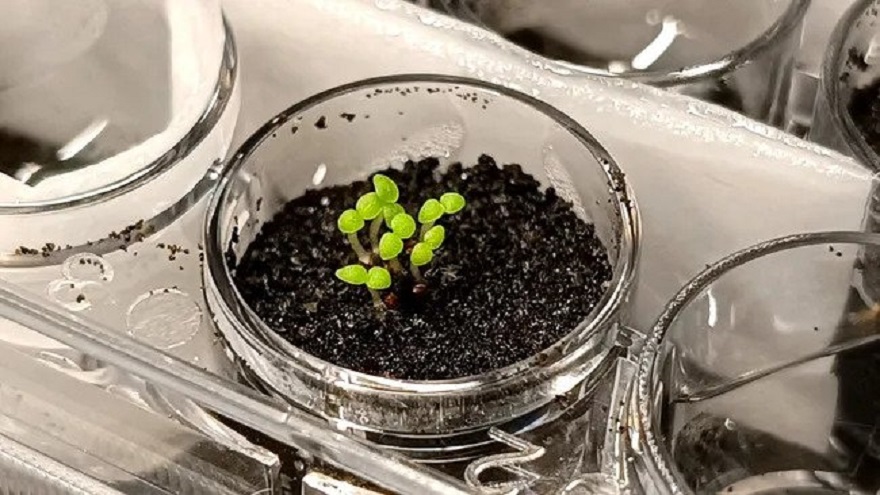Plants cannot survive if they are simply put in the lunar soil. However, if some types of bacteria live in it before that, it becomes possible. Scientists have proved this experimentally.

Lunar soil and plants
When astronauts fly to the Moon, they will almost certainly farm there. And scientists really hope that at least something in which they will be planted will not need to be transported from Earth. Previous studies have shown that the local soil contains a number of elements vital for plant growth. This has raised hopes that greenhouse farms there will be able to use local resources to help lunar bases sustain life.
“The advantage of growing plants on the moon is not limited to providing food for the astronauts who live in the lunar base,” says lead author of the study Yitong Xia from the Chinese Agricultural University in Beijing. “It could also help to refresh the air by providing oxygen, purify water and even provide emotional comfort.”
However, previous experiments have also shown that the lunar soil is poorly suited for crops. It not only lacks the carbon and nitrogen compounds necessary for plant growth but also vital elements, such as phosphorus, are mainly found in insoluble compounds that are difficult for plants to take in.
Bacteria come to the rescue
Scientists decided to cope with this problem with the help of bacteria. Unlike plants, they can survive in a much wider range of conditions and have taken advantage of a huge number of biochemical processes, as a result of which amazing transformations occur.
In the new study, Xia and his colleagues explored ways to make the lunar soil more fertile. They noted that microbes on Earth had helped make our planet more habitable for billions of years by physically and chemically changing solid rock into porous, biologically active soil.
So they decided to test it experimentally. They took volcanic ash, which in its chemical composition was extremely similar to the samples brought by American astronauts. The researchers mixed them with nutritious broth and bacteria and kept them for 21 days. Chemical analysis showed that during this time, at least three out of five species could double the amount of soluble phosphorus.
Next, the researchers grew a relative of tobacco, known as benth, in simulated lunar soil treated with these three types of bacteria for 18 days. They found that after 24 days of growth, chlorophyll levels in plants with these live bacteria were about twice as high as in plants grown in simulated lunar soil without them.
In addition, plants grown in simulated lunar soil with three bacteria for 18 days tended to have long stems and roots after six days of growth. They were also usually heavier and had wider clusters of leaves after 24 days of growth compared to plants grown in simulated lunar soil without them.
According to www.space.com
Follow us on Twitter to get the most interesting space news in time
https://twitter.com/ust_magazine
